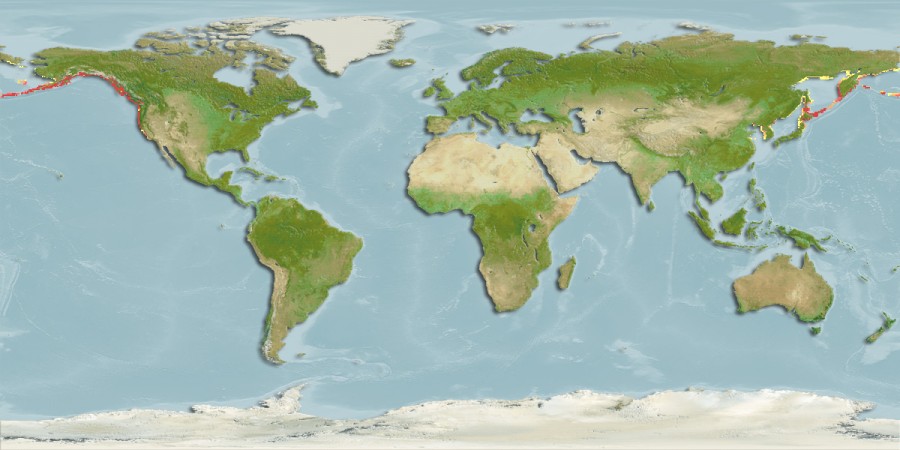Dorsal spines (total): 7 - 9; Dorsal soft rays (total): 14 - 16; Anal spines: 0; Anal soft rays: 10 - 13; Vertebrae: 32 - 33. Distinguished by the flattened tripartite anal papilla and the cirri on the eyeballs, head, lateral line and at the tip of each dorsal spine (Ref. 27547). Gill rakers reduced to low smooth mounds; lateral line high toward the head, curving downward to middle of sides, straight toward the tail, each of the anterior 15 or so pores having a slender cirrus (Ref. 27547). Next to the last anal ray longer than the rays before and behind it; pectorals reach to or just beyond front of anal fin; caudal rounded (Ref. 6885, 27547). Color varies with the environment, sometimes nearly uniform bright green but more often green to light brown above with dark wedge-shaped saddles, broader below, on upper part of sides, with lighter color between; sometimes, along or below lateral line, a dark longitudinal stripe that is in some cases interrupted with light spots; ventral region creamy to white; three dark lines radiating from the eye, the first to the snout, another downward to behind the mouth, the third rearward to base of preopercular spine; spiny dorsal with a dark blotch between first and third spine; pelvic fins plain, others usually dusky, mottled or indistinctly barred (Ref. 27547).
Source: FishBase. Eschmeyer, W.N., E.S. Herald and H Hammann. 1983 . (Ref. 2850)
